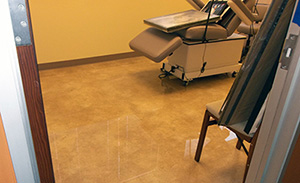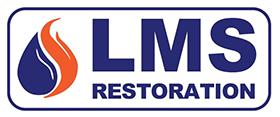Since - 1997
- Call now for a
- Free Estimate
- 903-229-4846 NE TX
- 281-572-8798 Houston

Hospital Disaster Restoration in Alvin & Galveston, TX
Why is disaster recovery planning important in health care?

Due to the nature of their business, healthcare organizations—hospitals, especially—must maintain a high degree of system and network availability.
Patients’ lives may depend on these systems being up and running, and their health could be seriously jeopardized by the lack of access to healthcare data in the event of downtime or due to water and fire damage.
Disaster recovery planning must reconsider the impact on clinical workflow, especially in the event of patient surgery. As physicians and clinicians become reliant on clinical applications to deliver patient care, the importance of disaster preparedness and infrastructure resiliency in healthcare becomes more of a priority.
Unfortunately, when IT budgets are established, many healthcare organizations overlook the importance of developing effective disaster recovery plans. Healthcare CIOs need to make their business case and receive a budget for disaster recovery planning.

The first step in disaster recovery planning is to create a business impact analysis. This involves identifying all of the systems and applications, and determining their impact on business if they went down.
In the case of hospitals and healthcare organizations, this also includes determining the impact on patients and care delivery.
After that, the next step is to identify all the possible points of failure and develop a plan to address these vulnerabilities. This may include establishing a remote data center or working with HER vendors to determine service level agreements in the event of disaster or system failures.
Contact us for a FREE Estimate

The first steps for disaster recovery
Another good idea would be to determine and examine the different data replication strategies available and see which ones best suit these hospitals.
What are the Health Insurance Portability and Accountability Act’s requirements?
A Health Insurance Portability and Accountability Act (HIPAA) covered entity must have a contingency plan in place, to assure continued access to electronic protected health information (ePHI) in the event of a system failure. HIPAA disaster recovery requirements include the need for the ePHI to have a backup plan, along with disaster recovery and emergency mode operation plans.
Organizations developing a HIPAA disaster recovery plan must also explain how sensitive healthcare data will be moved without violating HIPAA privacy and security requirements.
Does virtualization impact disaster recovery planning?
Some organizations are turning to virtualized disaster recovery to restore access to healthcare data in the event of system downtime. While there are many benefits to using virtualized disaster recovery, it is still crucial for healthcare organizations to maintain HIPAA compliance.
Some organizations are turning to virtualized disaster recovery to restore access to healthcare data in the event of system downtime. Having a backup of data is incredibly important, as hospitals have patient information and treatment plans saved into their computers. Creating virtual images as a disaster recovery policy, either from physical machines or from existing virtual servers, speeds up the restore process. This disaster recovery planning should also include procedures for restoring the backups to virtual hardware and must specify the conditions for the use of these virtual machines.
We here at LMS Restoration have years of experience in providing large-scale restoration when it comes to the field of water and fire damage. Rest assured, we can get your property back to its pre-disaster condition. If you’re in the area of Alvin & Galveston, Texas then don’t hesitate to call us at 903-229-4846 or visit our contact page at any time. Our operators are online 24/7!






